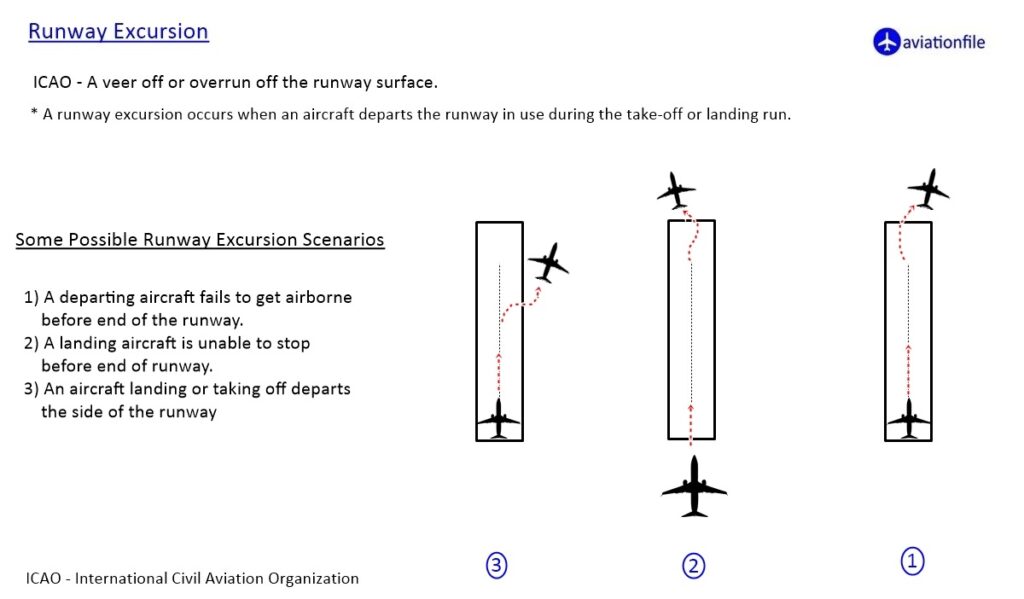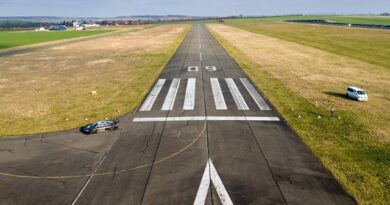Skidded Off Runway Incidents: Causes and Examples
Skidding off the runway is a harrowing experience that can result in severe consequences for both passengers and crew. These incidents, while rare, highlight the importance of aviation safety and the need for constant vigilance in the face of unpredictable circumstances. In this article, we will explore the causes behind skidded off runway incidents, examine real-life examples, and discuss the measures taken to prevent such incidents in the future.
Weather Conditions and Runway Surface
One of the primary causes of skidding off runway incidents is adverse weather conditions combined with the condition of the runway surface. Heavy rain, snow, ice, or even standing water on the runway can significantly reduce the friction between the aircraft’s tires and the ground, making it difficult for the pilot to maintain control during landing or takeoff.

Pilot Error and Runway Excursions
Another significant factor leading to runway skidding incidents is pilot error. These errors can include miscalculations in approach and landing speeds, failure to correct for crosswinds, improper braking techniques, or excessive use of thrust reversers during landing.
Aircraft Malfunctions and Mechanical Failures
Although rare, aircraft malfunctions and mechanical failures can also contribute to runway skidding incidents. Brake failures, tire blowouts, or problems with the landing gear can significantly impact an aircraft’s ability to stop or maintain control during landing or takeoff.
Preventive Measures and Safety Enhancements
To mitigate the risks associated with skidding off runway incidents, aviation authorities and airlines continuously work to improve safety measures. These include:
Runway Maintenance: Regular inspection and maintenance of runways, including removal of debris, repairing surface imperfections, and ensuring proper drainage systems, play a crucial role in preventing skidding incidents.
Pilot Training: Ongoing training programs for pilots that focus on adverse weather operations, runway conditions, and advanced techniques for landing and takeoff help improve their decision-making skills and situational awareness.
Enhanced Runway Friction Measurement Systems: Installing state-of-the-art friction measurement systems allows pilots and ground crews to accurately assess the runway conditions, ensuring appropriate actions are taken to optimize aircraft braking and traction.
Runway Overrun Prevention Systems (ROPS): Enhancing Aviation Safety
Runway Overrun Prevention Systems (ROPS), developed by Airbus, are advanced safety technologies designed to prevent runway excursions during landings or aborted takeoffs. By integrating with aircraft avionics, ROPS evaluates real-time data such as runway length, surface conditions, aircraft speed, and weight to assess landing risks. If a potential overrun is detected, it alerts pilots with visual and audio warnings, enabling timely corrective actions. Widely adopted across the aviation industry, ROPS enhances safety, aligns with international aviation standards, and significantly reduces risks associated with adverse weather or challenging runway conditions.
Conclusion
Skidding off runway incidents can have devastating consequences, emphasizing the need for continuous efforts to enhance aviation safety. By understanding the causes behind such incidents and implementing preventive measures, the aviation industry can strive to minimize the occurrence of these events. Real-life examples serve as powerful reminders of the importance of thorough training, proper runway maintenance, and the ongoing commitment to improving safety standards in air travel.
Real-life examples include:
a. Toronto Pearson International Airport, Canada (August 2005): An Air France flight experienced a blown tire during takeoff, causing the aircraft to skid off the runway. The incident resulted in a fuel leak and a fire, but all passengers and crew evacuated safely.
Source: “Air France Flight AF358 Incident.” Aviation Safety Network. Retrieved from https://aviation-safety.net/database/record.php?id=20050802-0
b. São Paulo–Congonhas Airport, Brazil (July 2007): A TAM Airlines flight overran the runway during landing due to a combination of wet runway conditions and a malfunctioning thrust reverser. The accident resulted in a fire and numerous fatalities.
Source: “TAM Airlines Flight JJ3054 Incident.” Aviation Safety Network. Retrieved from https://aviation-safety.net/database/record.php?id=20070717-0
c. LaGuardia Airport, New York (March 2015): A Delta Air Lines flight skidded off the runway during landing due to pilot error. The aircraft veered off course and came to a halt just feet from the water, narrowly avoiding a potentially disastrous outcome.
Source: “Delta Air Lines Flight DL1086 Incident.” Aviation Safety Network. Retrieved from https://aviation-safety.net/database/record.php?id=20150305-0
More incidents…
d. Durango International Airport, Mexico (July 2018): An Aeroméxico flight experienced a runway excursion during takeoff due to adverse weather conditions and pilot error. The aircraft veered off the runway, collided with the ground, and caught fire. Miraculously, all passengers and crew survived the incident.
Source: “Aeroméxico Flight AM2431 Incident.” Aviation Safety Network. Retrieved from https://aviation-safety.net/database/record.php?id=20180731-0
e. Trabzon Airport, Turkey (January 2018): A Pegasus Airlines flight skidded off the runway during landing. The aircraft came to a stop on a cliff just meters away from the sea. Fortunately, all passengers and crew were evacuated safely.
Source: “Pegasus Airlines Flight PC8622 Incident.” Aviation Safety Network. Retrieved from https://aviation-safety.net/database/record.php?id=20180113-0
F. Halifax Stanfield International Airport, Canada (March 2015): A SkyGreece Airlines flight slid off the runway during landing due to icy conditions. The incident resulted in damage to the aircraft’s landing gear, but there were no reported injuries.
Source: “SkyGreece Airlines Flight GWK700 Incident.” Aviation Safety Network. Retrieved from https://aviation-safety.net/database/record.php?id=20150329-0


